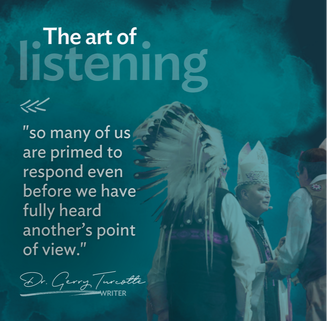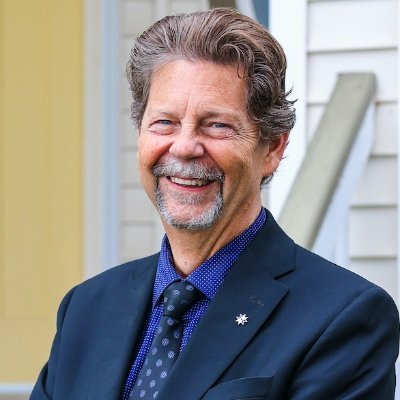 Listening is often referred to as an art — as in the ‘art of listening’. Reams of books have been dedicated to defining ‘how’ to listen, and even define ‘types’— Deep listening, Full listening, Critical Listening, Therapeutic Listening and so forth. Many motivators and healers speak about the difference between hearing and listening, with one comic wisely noting that the biggest mistake by most human beings is that they hear quickly, listen half, understand a quarter and tell double. For some commentators, the real issue is that so many of us are primed to respond even before we have fully heard another’s point of view. We arrive with our minds made up, and it is difficult to hear when we are speaking. This critical fact is a major reason that so much grief continues across so many areas. It is also why many of our institutions are almost systemically structured not to allow the voice of minorities to be heard. Our dominant cultural and political institutions are structured around laws, practices and values defined and developed by those traditionally in power, and so they are often deaf to voices and practices that are not their own. We have seen this most glaringly in recent times in relation to how Governments have worked with First Nations, Métis and Inuit communities, often bringing settler values and solutions to issues, rather than sitting in community with Elders to understand Indigenous points of view. And then Governments feign surprise when agreements aren’t reached. Sr. Helena Burns, in her column A la Carte, makes a good point about how western cultures have always approached Indigenous peoples and notes, ‘It’s of the utmost importance to listen right now. Listen to the Indigenous voices and experiences themselves — silenced for so long. Some of these are horror stories and we must not look away.’ As importantly, she argues that without listening, ‘non-Indigenous today can risk the same old rushing in, do-gooding, problem-solving — simplistically thinking we comprehend situations, and speaking “for” others.’ This reminded me of a similar conversation that was had in Australia when the impact of the missions and the Stolen Generations (equivalent to the Sixties Scoop) dominated the headlines. At the time, the university I was at ran an in-country program where we embedded non-Indigenous students with Indigenous communities. I recall one of my Deans telling me that he’d taken the latest group of students up for their weeklong placement. As always happened, the kids arrived ready to transform the communities and filled with advice; and they were always frustrated when the Elders asked them to sit by the fire and to reflect, with the instruction that they would be called on when the time was right. Instead of learning about the people — and the land that they were on — they wanted to transform them. It was always a humbling experience for our students to gradually understand that reconciliation was more significantly achieved when they found a way to listen first. One incident has always stood out for me. One time my Dean noticed a bright pink building in the Bush where our students had gathered every term. Unfamiliar with this he asked an Elder about it. ‘That’s always been there, but last week a group of Social Workers hired by the Government flew up and painted the building pink to help our men reconnect with their feminine side.’ When my Dean said he hadn’t noticed it before Auntie explained that several months earlier a separate group of Government advisors had flown in to paint the building blue so that Aboriginal men could reconnect with their masculinity. Perplexed, my colleague asked what the building was for. ‘Nothing,’ said Auntie. ‘We built it to keep the white fellas busy so they would stay out of our business. They come up and paint the building and get our signatures and then go back to collect their grants. In the meantime, we focus on serving our community.’ In order to hear the other, we need to stop speaking. The Austrian pianist Alfred Brendel noted that the word Silent contains the same letters as the word Listen. Mother Teresa once said, ‘God speaks in the silence of the heart. Listening is the beginning of prayer.’ True listening is clearly a difficult concept for many of us, but it’s not as though we don’t have a guide to follow. The Gospels show us how Jesus modelled the art of listening. He moved among the masses and heard their cries (Mark 1); he shared water with a Samaritan woman when cultural dictates forbade it (John 4); and of course, he prayed to the Lord, and guided his disciples. Jesus never spoke through formulas, but rather presented parables that reflected the complexities of the situation or teaching he presented. In the familiar, and perhaps overused phrase, he met people where they were. I believe it’s fair to say that people felt heard. And this, in the end, is what we all want, and certainly what we desperately need. Listen; Silent. They are one and the same.
1 Comment
1/17/2022 02:01:09 pm
In your dialog we are to listen which we sometimes forget to do as we are busy with our own little lives and thoughts. It is true that our government of the time was hasty in their decision to take children from their home to try to assimilate them into our culture. A lot of good came from this also but no mention of this ever appears. Why is their not two sides to the stories even if one side outweighs the other, the story should be told truthfully. The Indigenous of the time did respect the people at the schools, as they brought their sick, to the schools, in hope that they could to be healed. At the same time white children, of the time, also attended these schools.
Reply
Your comment will be posted after it is approved.
Leave a Reply. |
Author
Catholic Pastoral Centre Staff and Guest Writers Archives
July 2024
Categories
All
|

 RSS Feed
RSS Feed